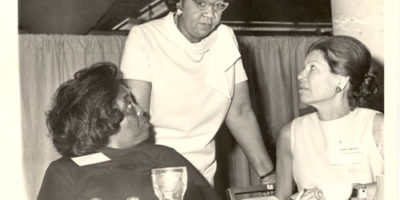Intimate Partner Violence
Intimate partner violence is a scourge that crosses all socioeconomic, cultural and racial boundaries. It is both ubiquitous and invisible. Its insidiousness is due, in part, to the secrecy that surrounds it. A woman* in an abusive relationship often remains silent, out of fear of repercussion at the hands of her abuser should she speak out; complex reasons such as shame, a misplaced belief that she is somehow to blame for the violence, that she should have known better than to choose this particular partner, a sense that she should have listened to her friends or family who warned her away; or the belief or reality that she needs to maintain her relationship for emotional, economic, or other reasons. The vast majority of abusers, of course, also go to great trouble to hide the pain they perpetrate and are often in denial about their behavior. The silence surrounding abuse makes the violence all the more difficult to address, in part because both abusers and survivors feel isolated and alone. The silence, then, becomes self-perpetuating — people in abusive relationships don’t talk because they believe they are alone, and they believe they are alone because abuse is not talked about.
In Unclenching Our Fists: Abusive Men on the Journey to Nonviolence (Vanderbilt University Press), Sara Elinoff Acker peels back some of this secrecy, featuring the first-hand stories of 11 men who are on the long road toward leading abuse-free lives. Acker’s access is remarkable in that 8 of the 11 men consented to using their full, real names, and 10 of the 11 consented to having their photos included. This in itself is immeasurably important in breaking the code of silence.
Acker has been involved in anti-domestic-violence efforts since 1985. She started working on intervention programs with men in 1992, when she realized that a critical component of mitigating abuse was to address the source of the problem, the abusive men. She has written this book in the hopes that the stories of these men who have become non-violent or are working toward non-violence will inspire other men to embark on the same journey.
Acker has wisely and intentionally chosen to include men in the book from a diverse range of backgrounds, and included stories of physical, economic and psychological abuse. These diverse representations enable abusers to find their reflections in these stories. This diversity is also important for women looking to recognize their own situations represented — both to give them hope that their partners might change and to help break some of the shame. Women who are educated professionals married to similarly positioned men may appreciate the inclusion of a surgeon, a professor, a filmmaker and an engineer. They might also find resonance in one man’s story that includes the observation that “the fundamentalist church, in my opinion, just gives abusive men a place to hide.” At the same time, I am disappointed that there isn’t one Jewish man (at least no one obviously Jewish) included in this book. There is a strong and persistent myth across the spectrum of Jewish communities (and outside the Jewish community as well) that Jewish men are not abusive. This gives abusive Jewish men cover, and horribly reinforces for their partners a particularly deep sense of shame and isolation.
While Acker hopes that this book will inspire men to try to change, she also is careful not to paint a picture of false hope for either men or women. The men’s stories are accompanied by a chapter outlining in detail the very long and complicated road to nonviolence. Acker is transparent with her readers: most men enroll in batterer programs because they are mandated to by the courts, not because they have admitted that they have a problem or because they are looking to change. Of those who do enroll, only a small percentage become non-violent; even the men in this book, who have come so far, do not see themselves as “cured”– they all articulate that they must remain vigilant about backsliding. And Acker is careful to give abusive men no empathy. For example, while all of the 11 men here were abused themselves as children or witnessed their fathers abusing their mothers, she nonetheless holds them fully responsible for their behavior, emphasizing that abuse is always a choice, and the abuser is always responsible.
The book also includes a chapter in which survivors (not the partners of these men) and domestic violence professionals respond to the men’s stories. The women are skeptical, not only about the possibility of change, but about the sincerity of the men in the book. It seems likely that some of the survivors respond with skepticism because of their own experiences, rather than as a reaction to these men in particular. But either way, it feels refreshing, honest and responsible toward survivors that the author leaves the door open for questioning the fundamental premise.
Acker makes clear that her book is not a self-help manual. The stories of the men, the outlines of the steps toward non-violence — these are roadmaps for men looking to change and for women to follow to see whether their abusers really are changing. True change can only come with long-term commitment and with the help of a program. However, this book makes a fine first step for both men and women looking for inspiration or hope, without unrealistically raising expectations. The book is also an excellent resource for anyone wishing to understand more clearly the mind of an abuser, or to help a friend on either side of an abusive relationship.
Elizabeth Mandel is a writer living in New York.




